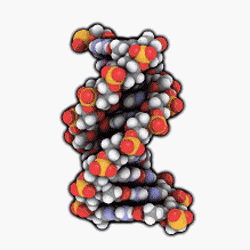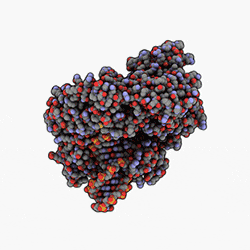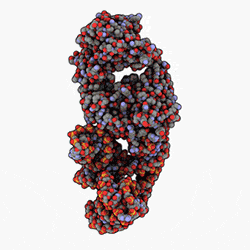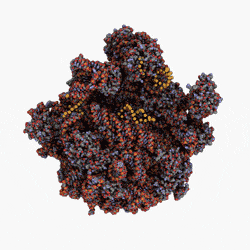A Sand Pendulum That Creates A Beautiful Pattern Only By Its Movement.
A sand pendulum that creates a beautiful pattern only by its movement.
But why does the ellipse change shape?
The pattern gets smaller because energy is not conserved (and in fact decreases) in the system. The mass in the pendulum gets smaller and the center of mass lowers as a function of time. Easy as that, an amazing pattern arises through the laws of physics.
More Posts from Theperpetualscholar and Others

How can isotopes help in the hunt for life, both on Earth, and on other planets? The first of our five #RealTimeChem week competition winners, Dr. Chelsea Sutcliffe, explains here: http://wp.me/p4aPLT-1tZ
“Because in the end to learn a language, to feel connected to it, you have to have a dialogue, however childlike, however imperfect.”
— Jhumpa Lahiri, Teach Yourself Italian (via kxowledge)
Can you clear up the animal/human egyptian stuff some more? I find it interesting!
I’m honestly not sure any explanation will ‘clear it up’ but I’ll give it a go, since the original post has so many reblogged comments that misunderstand things.
I kinda went into it a bit here in this post, and a little in this one, but I’ll reiterate it here for posterity.
Egyptian gods appear to have animal heads, but, in truth, the animal headed form is merely to demonstrate the duality of the god - the animal and the human. (I want to point out at this juncture that not every Egyptian god has an animal form. Some are simply human, and others have forms that are anthropomorphised inanimate objects). Duality was important to the Egyptians as they were intrinsically linked to the world around them and often their religious mythology is deeply linked to the natural world. This is why we see themes such as life/death structure/chaos male/female animal/human etc. They equated what they saw in their lives as aspects of the divine.
One such example is the god Khepri. Khepri is the god of the Morning/Rising sun, and was responsible for pushing the sun across the sky. Khepri is depicted as, in most cases, as simply a Scarab beetle, and sometimes with the body of a man whose entire head is a scarab beetle. The Egyptians took inspiration from the natural world to explain the divine, so they saw the humble dung beetle (that’s what a Scarab beetle is) pushing it’s ball of dung about, and also its babies hatching out from this dung ball seemingly out of nowhere. The ball of dung they equated with the Sun moving across the sky, thus assuming that a divine scarab was pushing the sun in a similar manner. Khepri took on a ‘creator’ aspect as the Egyptians saw the dung beetle seemingly creating life from nothing, though in reality they’re just laying eggs within the dung ball that eventually hatch. But this wasn’t something the Egyptians understood, so they believed that the scarab beetle had the power to create life from nothing, much like their own creation myth of life springing forth from a mound of earth in the waters of chaos. Dung ball = mound that emerged from the waters of chaos. Thus, when naming the god, the Egyptians chose a word xpr (kheper) which means ‘to come into being’ to relate to the creation of life and also the rising of the sun. And how is xpr written? With a Scarab beetle! Everything has it’s place in Ancient Egypt. As for the human body with a scarab beetle head form, well that’s more of a form that in art allows the Egyptians to show the Scarab beetle doing humanoid things in religious scenes.
For gods like Anubis, who are depicted with the head of their animal form, it’s different. The duality works the same, insomuch as the form you see (Golden Wolf headed human) is just a combination to show that the god has two forms and two kinds of power - the divine human form and the divine animal form. In most cases you would never see the human form as you were only allowed to see a God’s true form after death, so it was prohibited to depict the god as human (though there’s a rare depiction of Anubis in human form at Seti’s temple at Abydos). Basically, the Egyptians believed that images could magically come to life so depicting a god as a mortal human would cause the god to die. No one wants that.* So, the Egyptians combined the Animal and Human in order to show the god legitimately in a scene.
* I am aware that there are gods that only have a human form, but they’ve always got divine markers such as headdresses that mark them as ‘not mortal human’ but a god, therefore they wouldn’t be subject to them to the same rules. Isis and Nepthys for instance have their names in hieroglyphs as headdresses to mark them as different, and Hathor has her cow horns and sun disk.
However, when I say ‘animal form’ I do not mean, and neither did the Egyptians, a walking talking animal that does everything a human does. Anubis’ animal form is not a walking, talking Golden Wolf in human clothing. When I say ‘animal form’ I mean a literal animal. Just a wolf. Nothing else. Every wolf an Egyptian saw they would believe was a form of Anubis visiting the mortal realm.
Unlike in Greek Mythology, where the gods were essentially human (though looking at Zeus…goddamn Zeus) and everyone knew they lived on Mount Olympus, Egyptian gods had no such thing. The Ancient Egyptians believed that their gods lived on the same plane of existence, but on another level. Kinda like ghosts I guess? There but not really. So they would manifest as something. Khepri was the scarab beetle pushing the dung in a ball and in turn rose the sun. Dogs/Wolves hung about in the necropolis so they saw that as a manifestation of Anubis guarding the dead (even though those dogs were most likely eating the dead…), which also gives way to the epithet of Anubis on his Mound (i.e. Anubis who sits upon a mastaba guarding the tomb). Bastet was the cat hunting mice around the grain stores so that the harvest wouldn’t be ruined. The Egyptians would feed these animals as a form of worship,** and that’s how they ended up with so many cats in the house.
** I say worship in a very loose sense. The worship of gods like Osiris, Isis, Amun, Mut, Khonsu etc was the prerogative of the Pharaoh and his phyles of priests (set of Priests for each god). Most Egyptians were not allowed into the major temples. In fact, they were not allowed past the first forecourt, and that was at festival time. The Egyptians believed that their Pharaoh was a demi-god and therefore their link between the gods and themselves. Only he was allowed to worship the gods, as it was Pharaoh’s job to maintain what’s known as Ma’at (cosmic order). If Pharaoh didn’t then the world would fall into chaos, which is why they tried to exorcise Akhentaten from the record because he did not maintain ma’at! Of course, Pharaoh couldn’t be in the temples for each god every day, so most of it was devolved to High Priests and their underlings. Regular Egyptians would not have worshipped the main pantheon, but rather the more minor domestic gods, such as Bes and Taweret, at home. Feeding cats would have fed into this more ‘loose’ worship.
But of course there was also the ‘human’ form, which meant that a god could come to you as a person and you wouldn’t even know it. Sekhmet could manifest as the general who leads the troops into battle, Taweret is the midwife who delivers your baby, Sobek is the fisherman responsible for the good haul of fish today etc etc. The depiction of them in one zoomorphic form is purely to demonstrate that they could be both and that human and animal forms were equal parts of their power and character.
I hope this clears some of it up!
Sources:
Silverman, D. (1991) Divinity and Deities in Ancient Egypt, In J. Baines, L. Lesko, & D. Silverman, Religion in Ancient Egypt: Gods, Myths and Personal Practice. Ithaca and London: Cornell University Press. 7-87
Schoske. S & Wildung. D, (1992) Gott und Götter im Alten Ägypten. Berlin: Von Zabern
Meeks. D & Favard-Meeks. C, (1996) Divine Life of the Egyptian Gods (Hachette (original), 1993 / Cornell University (translation), 1996)
Assmann, J. (2001). The Search for God in Ancient Egypt.(D. Lorton, Trans.) Ithaca & London: Cornell University Press.
Hornung, E. (1982). Conceptions of God in Ancient Egypt: The One and the Many. (J. Baines. Trans) Ithica & London: Cornell University Press





Endorphins
You’ve probably heard of endorphins by now as those chemicals that cause the euphoric rush during exercise. They are our body’s natural painkillers and lead to positive feelings similar to that produced by morphine!
More posts like this about the human brain and behavior on @tobeagenius, Youtube and Instagram!

Ever wondered about the chemistry behind the colours of bodily fluids? Well, urine luck! Larger image and more info: http://wp.me/p4aPLT-2j2

13.05.17 // Updated my physics window for the first time in ages! Had some thoughts over the past few weeks surrounding a free scalar field universe model so I drew them up as well as some old game theory because I watched a Beautiful Mind and felt nostalgic. I hope you are all having wonderful days / evening / whatever plane of existentialism you currently observe 😉

Did Megalodons Brush Their Teeth In The Morning?
Almost everyone has heard about the Megaladon aka Carcharodon Megalodon - the terryfying, hair-raising sea creature that used to reign the waters about 10 million years ago. It’s a really huge scary shark basically.
And it is no secret that the species never suffered from tooth decay or plaques. Mostly this has been thought to be due to the regular changing of teeth. However, recently scientists have discovered that the sharks actually used toothpaste!
Well, not exactly. As it turns out, Megaladons had an interesting teeth mineral composition. Their teeth were packed were with fluoride, which is what we use in toothpaste nowadays. Fluoride made their teeth extremely strong and resistant to bacteria. And it wasn’t only Megaladons - most of the predator dinosaurs and several other species of sharks had a similar tooth meniralisation.
However, nowadays predators and other mammals do not boast a full set of shiny, fluoride-filled teeth. Humans themselves walk around with agonising pain in their teeth meanwhile the dentists are rolling in money. Why would evolution do such a thing? Having fluoride in your teeth seems like an awesome advantage, right?
Scientists aren’t really sure why the presence of fluoride was eliminated during the hostile course of evolution. The best guess is that the concentration of fluoride in water has decreased over the years and it wasn’t enough to support the teeth-changing cycles or organisms.
It may also be due to the fact that fluoride can be harmful. If fluoride encounters sour fruits or meat that isn’t fresh, hydrofluoric acid is formed. The acid is very corrosive, it can even dissolve glass. Who would want to have this in their mouths?
Source: http://www.paleonews.ru/index.php/new/588-fluoridtooth
Since US history is all the rage now, I thought I’d share some of my favorite stories about the founding fathers.
-John Adams and Thomas Jefferson once visited the home of Shakespeare together… and both broke off pieces of one of the writer’s chairs so that they could take home souvenirs.
-When he was given an official surrender document during the French-Indian War, George Washington blindly signed the thing because he didn’t want to admit he couldn’t read French. In doing so, he basically solely accepted the blame of multiple war crimes. Somehow he wormed his way out of this… one of his methods was to blame his translator.
-Ben Franklin was forbidden from writing the Declaration of Independence because the founding fathers thought he would try to slip in puns and jokes.
-John Hancock was a convicted smuggler. Charges were dropped against him after he hired John Adams for a lawyer.
-Aaron Burr was a firm believer in the intellectual equality of men and women and lobbied for women’s suffrage.
-John Adams named his dog Satan.
-James Madison was our smallest president, at 5'4" and roughly 100 pounds.
-When he was 26, Washington bribed voters into electing him into office with alcohol… he gave certain voters about a half gallon for choosing him.
-Ben Franklin once wrote an essay urging scientists to “improve the odor of flatulence.”
-Jefferson warned Lewis & Clark to beware of giant sloths during their expedition.
-Adams and Jefferson were the original bros; after a lifetime of friendship, bitterness, and more friendship, they died hours apart on the same day- July 4th. Adams’ last words were, “Jefferson survives.” Well, not quite.
-Washington crossed enemy lines during the Battle of Germantown to return a lost dog to General Howe.
-The Star Spangled Banner was based off of a rowdy English drinking song.
-Alexander Hamilton’s descendants heavily edited and even hid some of his letters to his totally hetero bro, John Laurens, claiming “the content was embarrassing and indecent.”
-Ben Franklin opted for the turkey to be the U.S. national bird, claiming that bald eagles were cold and volatile.
-A few days before signing the Declaration, the Constitutional Convention got LIT. It’s rumored that the founding fathers drank 54 bottles of Madeira, 7 bottles of Claret, 7 bowls of spiked punch, 22 bottles of porter, 8 bottles of whiskey and 8 bottles of hard cider in this one night.




DNA Double Helix stores genetic information. DNA Polymerase replicates DNA.
RNA Polymerase synthesizes RNA from DNA. Ribosomes use RNA to build proteins
These four biological molecules are essential to all life on Earth.
They originated more than 3 Billion years ago during the Proterozoic Era, in a common ancestor of Bacteria, Archaea, and Eukaryota. Together these molecules form the fundamental pattern of the fractal of life; they are specialized machines that replicate each other and produce an endless variety of new forms. They have evolved over trillions of generations into extraordinarily complex arrangements that consume energy, organize, and reproduce.
so today I learned that when a pregnant woman suffers organ damage (such as a heart attack), the fetus sends stem cells to the damaged organ to help repair it. Apparently it is an evolutionary mechanism; by protecting its mother the fetus also ensures it’s own survival. I am in awe of how incomprehensibly complex our bodies are, truly. (x)
-
 nineteenwheels reblogged this · 2 months ago
nineteenwheels reblogged this · 2 months ago -
 nineteenwheels liked this · 2 months ago
nineteenwheels liked this · 2 months ago -
 vaguecaninething reblogged this · 3 months ago
vaguecaninething reblogged this · 3 months ago -
 throathole liked this · 4 months ago
throathole liked this · 4 months ago -
 cyborgsphinx reblogged this · 1 year ago
cyborgsphinx reblogged this · 1 year ago -
 cyborgsphinx liked this · 1 year ago
cyborgsphinx liked this · 1 year ago -
 lunaemoth reblogged this · 1 year ago
lunaemoth reblogged this · 1 year ago -
 alexanderrm liked this · 1 year ago
alexanderrm liked this · 1 year ago -
 ngavan liked this · 1 year ago
ngavan liked this · 1 year ago -
 diversespeaks reblogged this · 1 year ago
diversespeaks reblogged this · 1 year ago -
 des8pudels8kern reblogged this · 1 year ago
des8pudels8kern reblogged this · 1 year ago -
 czytacz reblogged this · 1 year ago
czytacz reblogged this · 1 year ago -
 pagaiduvariants reblogged this · 1 year ago
pagaiduvariants reblogged this · 1 year ago -
 flavdadsamate liked this · 1 year ago
flavdadsamate liked this · 1 year ago -
 hardaslightningsoftascandlelight liked this · 1 year ago
hardaslightningsoftascandlelight liked this · 1 year ago -
 sabellabella reblogged this · 1 year ago
sabellabella reblogged this · 1 year ago -
 untirosge liked this · 1 year ago
untirosge liked this · 1 year ago -
 m0mmadollarubbahubba liked this · 1 year ago
m0mmadollarubbahubba liked this · 1 year ago -
 blue-eyed-boss liked this · 1 year ago
blue-eyed-boss liked this · 1 year ago -
 habermannandsons liked this · 1 year ago
habermannandsons liked this · 1 year ago -
 stimsleepy reblogged this · 2 years ago
stimsleepy reblogged this · 2 years ago -
 ikemenprincessnaga liked this · 2 years ago
ikemenprincessnaga liked this · 2 years ago -
 amoebasapph liked this · 2 years ago
amoebasapph liked this · 2 years ago -
 nzmaleman liked this · 2 years ago
nzmaleman liked this · 2 years ago -
 mountainlove2002 liked this · 2 years ago
mountainlove2002 liked this · 2 years ago -
 nawteeboy4u liked this · 2 years ago
nawteeboy4u liked this · 2 years ago -
 bigstick59 liked this · 2 years ago
bigstick59 liked this · 2 years ago -
 thedarkladyofthenight reblogged this · 2 years ago
thedarkladyofthenight reblogged this · 2 years ago